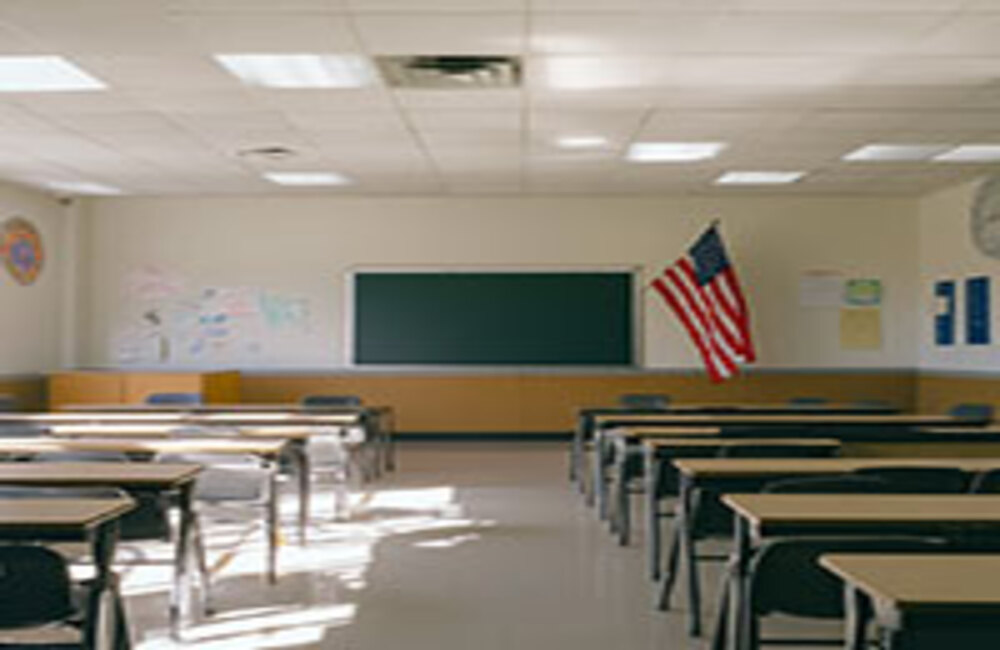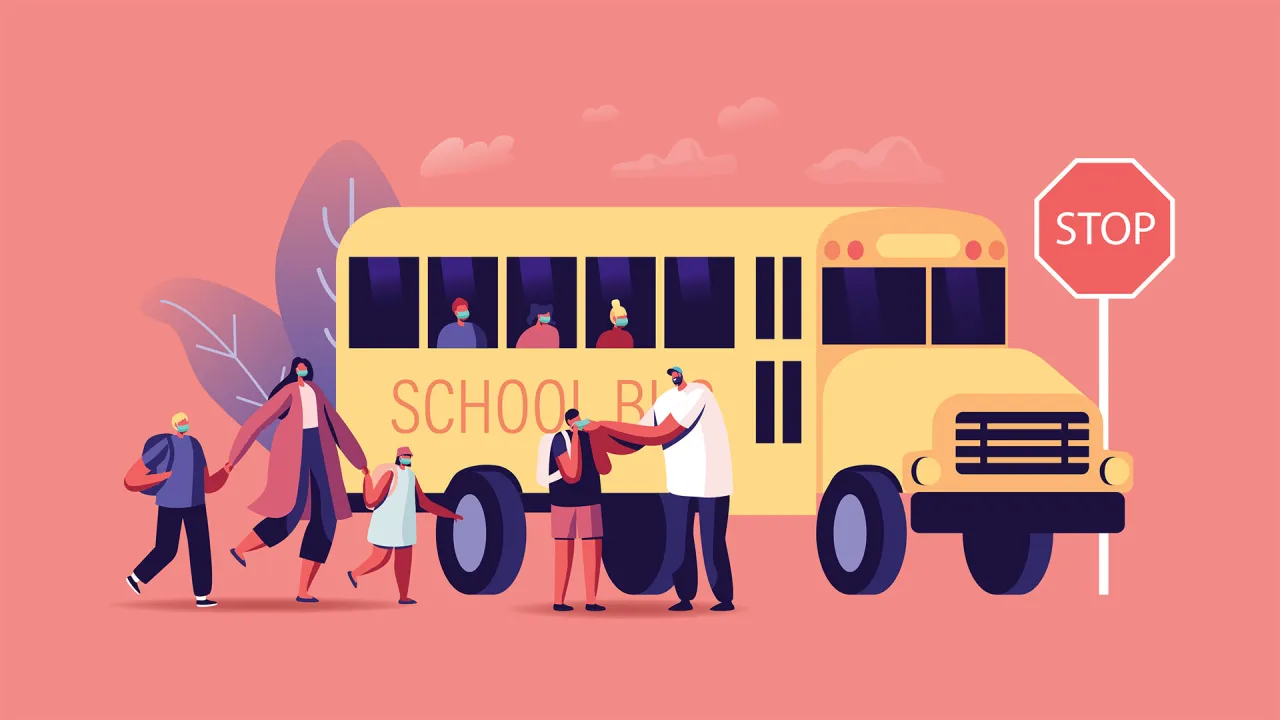The best states for public education in 2024
If you’re a parent or caregiver, you’ve probably considered the quality of your state’s education system. While having this knowledge is essential for all families, it’s especially important to those who are moving to a new state or are moving to the U.S. from outside the country.
Settling down in a new area with good schools should be a top consideration in setting children up for future success. Unfortunately, not all schools perform equally; some may get an A-plus in K-12 performance but lack safety. Others might do a good job of preparing students for higher education but lack proper funding or support.
To help families make informed choices before moving, ConsumerAffairs ranked all 50 U.S. states and Washington, D.C., across four key categories: K-12 performance, school funding and resources, higher education quality and safety. These rankings identify the best states for public education in 2024. You can find a full breakdown of our methodology below.
Not all public education is created equal
In the fall of 2022, more than 49 million students were enrolled in public elementary and secondary schools across the U.S. About 32% ended the last academic year performing below their current grade level in at least one subject. Unfortunately, many of these kids were afforded different levels of assistance to help bridge the gap. For instance, 13% of public schools didn’t provide academic tutoring, while only a little over half offered after-school instruction.
Liz Cohen, Georgetown University’s FutureEd policy director, told ConsumerAffairs that parents should consider many factors when deciding what school will best fit their child, as there can be significant differences among schools — even within the same state.
“Look at the school culture. How does the school feel? Is my child going to feel like they belong in that community?” Cohen said. “There are bright spots and wonderful schools in every state in this country,” she added.
Connecticut Gov. Ned Lamont told ConsumerAffairs he knows how vital schools are to a state’s overall success. “The success of our state is highly dependent upon the success of our schools,” he said. “Our administration remains committed to strengthening all the schools in our state so that every child — no matter their neighborhood or family income level — has the opportunity to receive an education that prepares them for achievement.”
Top 10 states with the best public education
Many of the top 10 states for education have a few things in common, including a 90% or higher high school graduation rate, low pupil-to-teacher ratio and high test scores. The majority of these states are also located in the Northeast.
1. Massachusetts
Massachusetts has the best public schools in the country, according to our ranking. It boasts the highest high school graduation rate in the U.S. (96.1%) and ties Connecticut for having the highest average ACT score (26.4 out of a highest possible score of 36). The national average is 19.5. Younger students in this state have proven their success in the classroom — the state has the best fourth-grade reading and eighth-grade math scores in the country on the National Assessment of Educational Progress (NAEP) tests.
These high assessment marks have allowed school officials to reward educators generously. On average, Massachusetts teachers have the third-highest teaching salary in the country, at $92,307 per year, 33% above the national average.
2. New York
New York sets a high bar for investing in students and teachers. It dedicates $33,020 in expenditures per K-12 student, which is the highest amount among states from 2022 to 2023. New York pays its teachers the second-highest teaching salaries in the country ($92,696 per year) and employs more teachers with advanced degrees (master’s degree or higher) than any other state.
Despite having one of the highest K-12 populations, New York’s student-to-teacher ratio is sixth best in the country, at 11.7 students per teacher.
3. New Jersey
The Garden State has smaller-than-average student-to-teacher ratios — with one teacher for every 11.8 students — and receives high marks in school safety. Between 2022 and 2024, New Jersey had the fourth-lowest number of gun violence incidents per 100,000 students. It also had the third-lowest number of criminal offenses on college campuses per 100,000 students in 2022.
Students in this state also perform very well on tests. For instance, New Jersey eighth graders rank first in the nation in reading assessments and score in the top 10 in both fourth-grade reading and math assessments and eighth-grade math assessments. Older students also excel, with the average ACT score in New Jersey at 24.4, about 25% above the national average.
4. Washington
Washington is the first West Coast state to appear on our top 10 list, ranking fourth in the nation for best public schools. The average ACT score of 24.5 is above the national average, and the average teacher salary in the state is the fourth highest in the country, at $86,804 per year. The Evergreen State also has the country's third-highest grant aid per student ($2,060), which is the highest in our top 10.
Katy Payne, chief communications officer for the Office of Superintendent of Public Instruction in Washington, told ConsumerAffairs she likes seeing her state’s continued progress. “While these ratings are just one way to measure progress, we appreciate the opportunity to see how Washington is doing compared to other states,” she said.
5. Pennsylvania
Pennsylvania is a great place to live if you want a good education. This Northeastern state has the second-highest high school graduation rate in the nation (95.89%), and students have an average ACT score of 23.9, which is 23% higher than the national average.
The Keystone State also has a lower-than-average student-to-teacher ratio (13.3 students per teacher) and employs an impressive number of teachers with advanced degrees.
6. Vermont
Students in Vermont have above-average SAT and ACT scores, and the state has the best student-to-teacher ratio in the U.S. (10.5 students per teacher). In addition to small classrooms, Vermont has the third-highest student expenditure in the country, $28,782 per student, which is 65% above the average from 2022 to 2023. It also has the third-highest high school graduation rate, with 94.55% of students earning a diploma.
7. Minnesota
Ranking seventh on our list, Minnesota has an excellent high school graduation rate (94.13%) and high test scores. Students in this state have the ninth-highest average SAT score in the country (1201). Also, K-12 Minnesota public schools excelled on fourth-grade and eighth-grade national math assessments.
Minnesota’s Department of Education Commissioner Willie Jett told ConsumerAffairs that officials in Minnesota are focused on making the state the best place to raise a family. “A cornerstone of that commitment is ensuring every child receives a quality education, no matter their race or ZIP code,” Jett said, adding that Minnesota officials continue to invest considerably in the state’s education system.
“These include ensuring our students are well fed through free school meals, transforming the way we teach reading, building and retaining the best educator workforce, and making sure our schools are safe and nurturing places to be,” Jett stated.
8. Connecticut
Connecticut students are tied with the first-place state, Massachusetts, for having the best average ACT score in the country (26.4). The state also had the sixth-highest spending per student in the U.S. from 2022 to 2023 ($25,139), more than $7,000 above the national average.
State officials have invested the fourth-highest amount of state and local funding per college student from 2021 to 2022. Connecticut teachers enjoy small classrooms and substantial salaries ($83,400 per year), and many of them (89.6%) have an advanced degree. Lamont, the governor, stated that he’s proud of his state’s ranking.
“Much of what we are seeing in these rankings must be credited to the exemplary teachers in our state who have dedicated their careers toward improving the lives of our students. Connecticut’s strong education system is creating a workforce that is prepared with the skills and talent employers need to fill good-paying jobs,” he told ConsumerAffairs.
9. Virginia
Students in Virginia average an ACT score of 24.6, which is 26% above the nation's average. It’s also worth mentioning the state’s teacher-to-student ratio is lower than average (13.6 students per teacher), and an above-average percentage of teachers have advanced degrees (62.7%). Virginia also has a high four-year college graduation rate (69.3%) and the country's fifth-highest public college retention rate (85.9%).
10. Wisconsin
Rounding out our top 10, Wisconsin is a high-performing state in education. It has an above-average high school graduation rate (93.33%) and a lower-than-average student-to-teacher ratio — Wisconsin classrooms have 13.7 students for every teacher. Notably, the state has the fifth-best average SAT score in the country, at 1236. This is about 20% above the national average.
Wisconsin’s public four-year in-state college tuition is also 18% lower than average, costing a student an average of $9,619 per academic year. The state also has an above-average expenditure per student ($17,685) and high marks in school safety.
Which states ranked poorly for public education?
According to our ranking, Arizona, Alabama, New Mexico, Oklahoma and Idaho are the worst states for education in the U.S., and they tend to share some common themes that may contribute to their placement. For example, these states have relatively low average teacher salaries and low math and reading test scores among fourth graders and eighth graders (with the exception of Idaho).
Perhaps more importantly, these states also spend less on K-12 students. During the 2022-2023 academic year, public elementary and secondary education expenditures per student averaged $17,493. One of the bottom five states, Idaho, had the lowest average per-student expenditure in the country.
Some of the bottom five states, like New Mexico, had other striking deficiencies. Students in this state had the lowest average SAT score and scored the lowest on all four proficiency tests included in our data. Arizona, which scored last in our total ranking, had consistently low scores across the board and was at the bottom in pupil-to-teacher ratio, earning the distinction of having the most crowded public school classrooms in America.
Joshua Glazer, an associate professor of education policy at The George Washington University's Graduate School of Education and Human Development, told ConsumerAffairs that it’s important for states to adopt a long-term strategy regarding education. However, he says it’s also essential not to include too many changes simultaneously.
“There’s a lot of value to these states' comparisons, but there is the unintended consequence that it can foster a short-term mentality. And that turns out to be very self-defeating and unproductive,” Glazer said, adding that test scores shouldn’t be the only metric schools focus on. “The goal is not to improve test scores. The goal is to create better, more meaningful, more interesting, more rigorous learning opportunities for kids.”
See how your state ranks in education
Nathan Sorber, director of the School of Education at West Virginia University’s College of Applied Human Sciences, told ConsumerAffairs that it’s vital that states invest in education to benefit society as a whole.
“Investing in quality education significantly enhances teacher quality, recruitment and retention, which translates into improved student learning outcomes and helps close achievement gaps among diverse student populations. … Consequently, it cultivates a more skilled workforce, boosts postsecondary participation rates and drives long-term economic growth, thereby fostering robust state development and advancing standards of living,” he said.
What is the quality of each state’s education? See your state’s ranking below.
Consider a state’s education system before moving there
Moving is always a big decision, and it can be particularly tough on families with young children, who have the added stress of choosing new schools. Before making a move, Glazer suggests parents create a list of what’s important to them regarding education.
“Sure, academics is part of that, and many people want to be a part of a system that’s going to lead to academic success, but that’s not the only thing. Moving to a high-performing state does not really guarantee you anything about your kid’s experience at that school or district,” he said.
Parents should also consider a school environment that will make their child feel safe, supported and like they belong — not just academically but emotionally and psychologically. Glazer noted that parents should also look at a prospective school district’s performance, not just the state’s overall education ranking. Cohen from Georgetown agrees with that sentiment.
“Where your child goes to school is a super personal choice for many parents. For many parents, it’s also where you can afford to go,” she stated.
Cohen said schools are continually evolving, and we’re entering an era when budgets will be much tighter. She recommended that parents ask questions like what programs are on the chopping block, whether the school's class size will shift and whether there are enough teachers. According to the National Center for Education Statistics, 86% of K-12 public schools reported challenges in hiring teachers for the 2023-2024 school year. Seven in 10 public schools said there were too few candidates applying for open positions, while 66% said there was a lack of qualified applicants.
Methodology
To determine the states with the best public schools in the U.S., the ConsumerAffairs Research Team compared all 50 U.S. states and Washington, D.C., across four categories: K-12 performance, school funding and resources, higher education quality and safety. The scores for each of the four categories were calculated using the following metrics:
K-12 performance (30 points): The K-12 performance category comprises seven metrics: public high school four-year graduation rate in 2022 (10 points), average SAT scores in 2022-2023 (5 points), average ACT scores in 2022-2023 (5 points) and average National Assessment of Education Progress reading and math scores for fourth graders and eighth graders (2.5 points each) in 2022. Data was sourced from Wisevoter, the College Board, ACT and The Nation’s Report Card.
School funding and resources (30 points): The school funding and resources score is based on four metrics: expenditures per K-12 student in 2022-2023 (7.5 points), K-12 pupil/teacher ratio in 2022 (7.5 points), average K-12 public school teacher salary in 2022-2023 (7.5 points) and percentage of K-12 public school teachers with advanced degrees in 2020-2021 (7.5 points). Data comes from the National Education Association and the National Center for Education Statistics.
Higher education quality (30 points): The higher education quality score includes seven metrics: four-year public college graduation rate in 2016 (3 points), two-year public college graduation rate in 2019 (3 points), retention rates at public colleges in 2022 (6 points), average in-state tuition and fees at four-year public colleges in 2023-2024 (3 points), average in-district tuition and fees at two-year public colleges in 2023-2024 (3 points), state and local funding per full-time college student in 2021-2022 (6 points) and state grant aid per full-time undergraduate student in 2021-2022. (6 points). Data was sourced from the National Center for Education Statistics and the College Board.
Safety (10 points): The safety score is based on three metrics: whether the state has a school safety board as of 2022 (4 points), the number of gun violence incidents at all schools per 100,000 students from 2022 to 2024 (3 points) and the number of reported criminal offenses at colleges per 10,000 students in 2022 (3 points). Data comes from Education Commission of the States, Gun Violence Archive and the Office of Postsecondary Education.
In each metric, the best-performing state received the maximum number of points, and the other states were assigned points based on how they compared with the best-performing state. We added the scores together to get an overall score, which has a maximum of 100 points.








